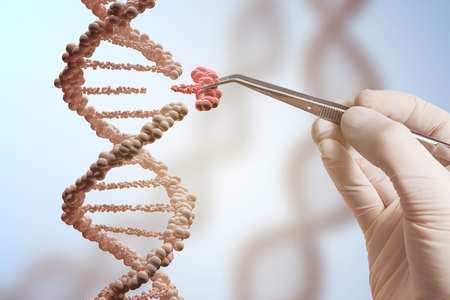There are a range of CRISPR systems in nature that protect against DNA damage, such as changes to DNA made by viruses, of which CRISPR-Cas9 is just one.
The Cas9 enzyme was the first such system to be discovered by researchers so naturally it is the most extensively studied. However, that does not mean it is the best system for editing and removing defective genes to treat diseases in humans. CRISPR-Cas9 is very precise, although the enzyme does not always make cuts to the DNA in the correct place and sometimes cuts to the genome are not made at all.
Since Cas9 was discovered, the search has been on for other CRISPR enzymes and several have been found. Some studies have already been conducted on CRISPR-Cas12a, which suggested the Cas12a enzyme is much more specific than Cas9, although the studies were far from conclusive.
Researchers at the University of Texas at Austin have taken research a step further to determine CRISPR-Cas12a’s mode of action. The research has shown that the Cas12a enzyme is much more precise than Cas9, which means edits can be made to the genome with fewer off-target effects. That could potentially make CRISPR-Cas12a much safer for use on human subjects.
CRISPR enzymes attack to specific sections of DNA using RNA as a guide. When a match is found, base pairs are formed between the RNA and DNA. In the case of Cas9, the bonds are strong. In order for the cut to be made, the RNA will check the first 7 or 8 bases and if they match, the bonds will hold the enzyme in place and the cut will be made.
The researchers found that CRISPR-Cas12a contains weaker bonds, which means that it requires a much more specific set of bases to bind in order to keep Cas12a in place for long enough to make the edit.
“[Cas12a] makes the process of base-pair formation more reversible,” said Rick Russell, Ph.D., professor of molecular biosciences and senior author of the study. “In other words, Cas12a does a better job of checking each base pair before moving on to the next one. After seven or eight letters, Cas9 stops checking, whereas Cas12a keeps on checking out to about 18 letters.”
No CRISPR system will be perfect, although CRISPR-Cas12a does appear to be much more specific and the best option yet for use in humans. The researchers also believe it may be possible to improve on the Cas12a system further. While more specific, some areas were identified by the researchers which showed that some mispairing of base pairs was not recognized, although the researchers believe their work has identified a path that can be taken to improve the system.
The study and results are detailed in the paper – Kinetic Basis for DNA Target Specificity of CRISPR-Cas12a – which was published on August 2, 2018 in the journal Molecular Cell. DOI: 10.1016/j.molcel.2018.06.043
